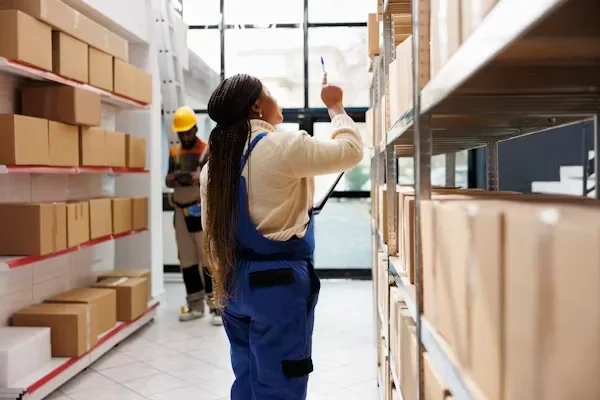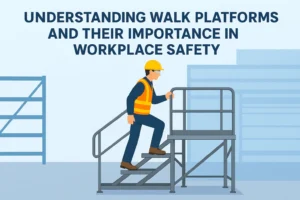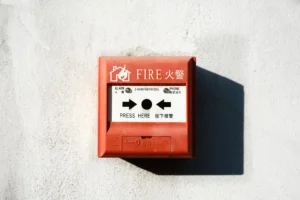Disclaimer: Safety regulations and equipment requirements may vary by country, state, or industry. Always consult local laws and official safety authorities, such as OSHA or your regional equivalent, to assure compliance with current safety standards.
The safety of your job site is influenced by the training and policies you have in place, as well as how effectively you manage your safety equipment. One can only imagine the disturbance caused when you hurry to locate that perfect glove with the proper sizing or wait too long to realize you need more essential eye protection. Poor logistical control can lead to time and labor losses and jeopardize workers’ safety. This post will guide you through some actionable steps to organize safety equipment supplies, making them easily accessible and reducing the risk of accidents.
1. Start With a Full Inventory Check

First, you want to do a complete inventory of your equipment. Bring out everything from storage, check the use-by dates, look for damage, and double-check quantities. This provides a running list of what you have and what needs replacement. You’ll be ordering extras or missing supplies without a clear starting point, and you’ll run low. When you’re done, compile a master list and keep it handy; then you won’t make any mistakes or second-guess yourself.
2. Create a Centralized Storage System
Establish a single storage space rather than distributing supplies over several rooms or corners of the warehouse. This will help you identify more clearly what is accessible and reduce the likelihood of equipment loss or misplacement. Remember to keep comparable safety equipment supplies organized and grouped so that replenishing becomes second nature; use labeling and signage that makes sense to you.
3. Use Digital or Systematic Tracking Tools

While manual tracking methods such as paper logs or basic spreadsheets can work for small inventories, they often lead to errors or missed reorder points as your inventory grows. A systematic tracking method, such as a digital spreadsheet or a simple inventory management system, can significantly improve accuracy. Track incoming supplies and usage rates, and set reminders to reorder before stock runs out. This proactive approach ensures you never face unexpected shortages.
To ensure that all safety tools meet current standards, it’s essential to cross-check your inventory against official safety guidelines. Consulting resources like the Government Safety Administration helps confirm that the gear you provide complies with required regulations, protecting your workforce and reducing liability.
4. Assign a Single Person to Oversee Supplies

When multiple people are responsible for ordering and distributing, confusion can occur, resulting in overstocked or missing items. Having one individual responsible for administering the safety equipment consolidates responsibility and accountability. This person can keep track of stock, take care of reordering, verify expiration dates, and maintain a log. One contact resolves multiple phone tags and expedites discrepancies or shortages.
5. Rotate Stock Regularly

Many safety items, such as hard hats, respirators, and first aid supplies, have expiration dates or shelf lives. Implement a “first in, first out” rotation system to avoid waste. Place older products at the front of the storage area and newer stock at the back so that the oldest supplies get used first. Regularly checking and rotating stock prevents equipment from expiring unused, saves money, and verifies that all gear meets safety standards.
6. Order Based on Usage Data, Not Guesswork
Remember that purchasing too much equipment wastes money, while ordering too little can cause supply chain delays and holdups. Instead of estimating, monitor your weekly or monthly consumption of every item. Understanding your usage trends helps establish accurate reorder points, ensuring a smooth flow through your supply chain. This method maintains a balanced supply, neither too much nor too little.
7. Train Your Team on Equipment Procedures

Even the best supply management system will fail if team members don’t understand how to use it. Train everyone on how to report damaged or missing equipment, check out supplies responsibly, and return unused items promptly. Clear guidelines and brief training sessions reduce confusion, prevent losses, and keep the inventory process smooth and predictable. When everyone follows the same procedures, the system runs efficiently, and your safety tools is always ready when needed.
Stay Organized and Keep Your Gear Ready

The approach to safety resource supply management must be one of perpetual motion. We remain organized, maintain good records, and educate our staff on how to manage this process. Whether you’re working in a small storage area or a large warehouse, developing specific processes will minimize the time spent searching for supplies and increase your time focusing on your priority: safeguarding your workplace.
Once you have a sound system, you’ll never again suffer the frustration of last-minute shortfalls, wasted gear, and chaotic storage. Instead, your crew will enjoy fluently accessible safety, ensuring everyone is happy, safe, and healthy every day.
Final Thoughts
Managing safety resources and supplies is crucial to maintaining a safe workplace. Regularly auditing your inventory, centralizing storage, tracking usage carefully, assigning clear responsibilities, rotating stock, ordering wisely, and training your team can create a seamless supply management process. This ensures that your equipment is always available, in good condition, and compliant with safety standards, allowing your job site to run smoothly and your workforce to remain safe.












